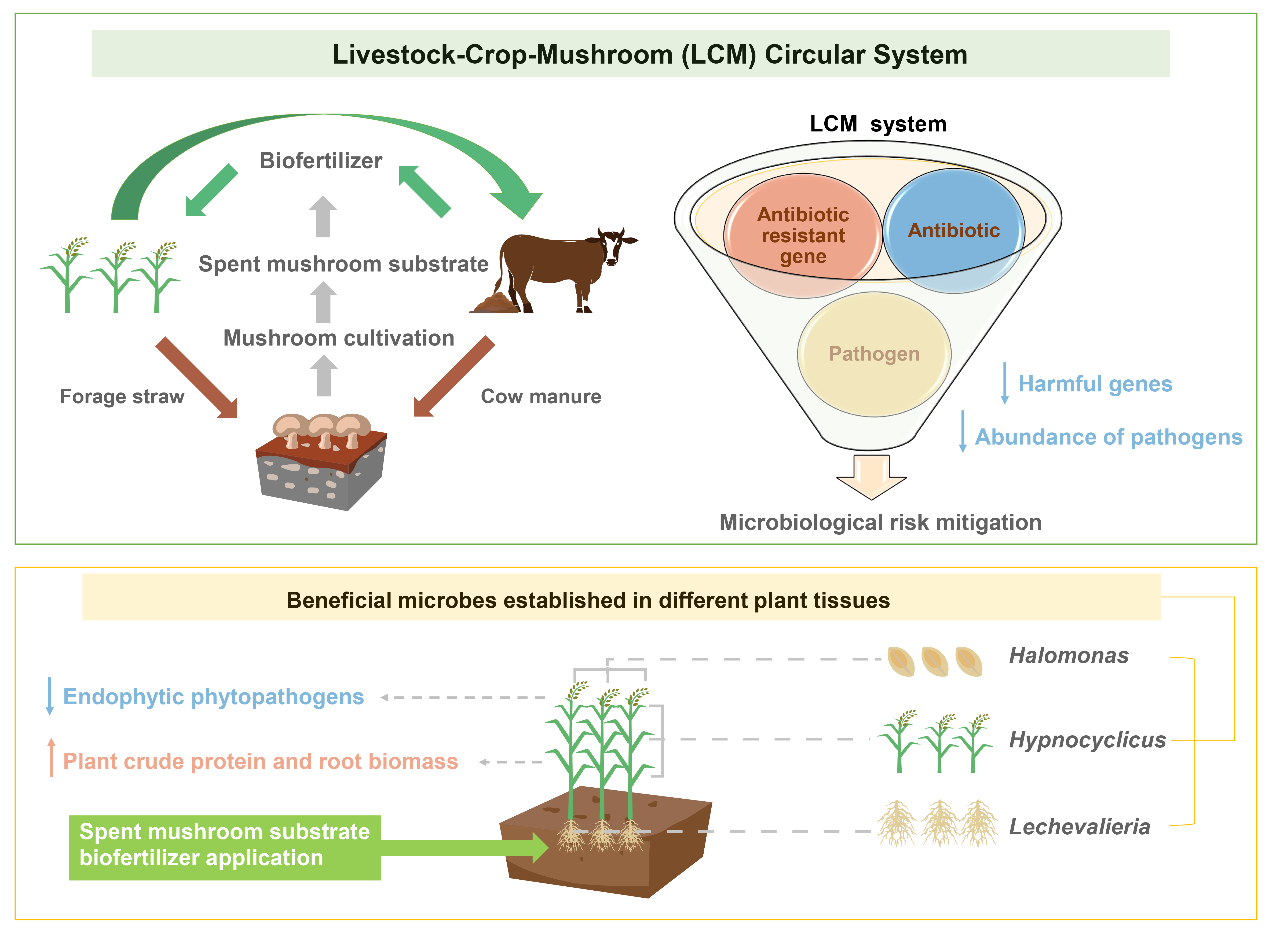
The intensification of global agriculture results in significant disposal challenges, with 14 billion tons of crop straw and 125 million tons of livestock manure produced annually. Traditional composting often fails due to low lignocellulose degradation efficiency and the persistence of pathogens and antibiotic resistance genes (ARGs). Additionally, the use of antibiotics, like oxytetracycline in livestock, increases the transmission of these ARGs and pathogens in soil-plant systems, threatening agricultural safety and the environment.
To tackle this issue, a research team from the Kunming Institute of Botany of the Chinese Academy of Sciences (CAS) has employed microbial conversion technology to create a closed-loop system that links crop straw, livestock manure, and spent mushroom substrates, promoting the green and efficient use of organic matter to support crop growth.
Taking advantage of Yunnan's abundant agronomic organic matter and fungal resources, the team selected the rare edible mushroom Stropharia rugosoannulata as the core conversion medium to construct a Livestock-Crop-Mushroom (LCM) cross-domain circular system.
This study investigated the pathway of "straw and cow manure co-composting → mushroom cultivation → spent mushroom substrate (SMS) reuse" to assess the regulatory effects of LCM end-products on oat growth and rhizosphere microecology. Comparative analyses were conducted between traditional compost (St: straw + cow manure) and SMS-amended compost (StM: St + spent mushroom substrate), yielding several key findings.
SMS-based composting demonstrates multiple benefits for agricultural ecosystems. By remodeling microbial community structure—particularly through the enrichment of functional microbes and saprophytic fungi—this method effectively suppresses pathogens while enhancing plant growth via optimized root development and nutrient utilization.
Additionally, it significantly reduces organic pollutants, including oxytetracycline residues in cow manure, as well as pathogen abundance and antibiotic resistance genes (ARGs) in both oats and soil, outperforming traditional composting methods.
Employing multi-omics techniques (metagenomics and endophytic microbial sequencing) alongside functional gene analysis, this study is the first to elucidate the profound influence of LCM biofertilizers on crop-associated microbial communities across spatial compartments (rhizosphere–stem–seed). These insights provide an efficient strategy for sustainable agronomic organic waste utilization and a new approach to mitigating agricultural microbiological risks.
The study was published in Environmental Science & Technology and was supported by the Strategic Priority Research Program of CAS, the Yunnan Province Talent Support Program for Young Scholars, and other funding sources.

The Livestock-Crop-Mushroom (LCM) Circular System: An Environmentally Friendly Approach for Enhancing Plant Performance and Mitigating Microbiological Risks (Image by KIB)

86-10-68597521 (day)
86-10-68597289 (night)

52 Sanlihe Rd., Xicheng District,
Beijing, China (100864)

